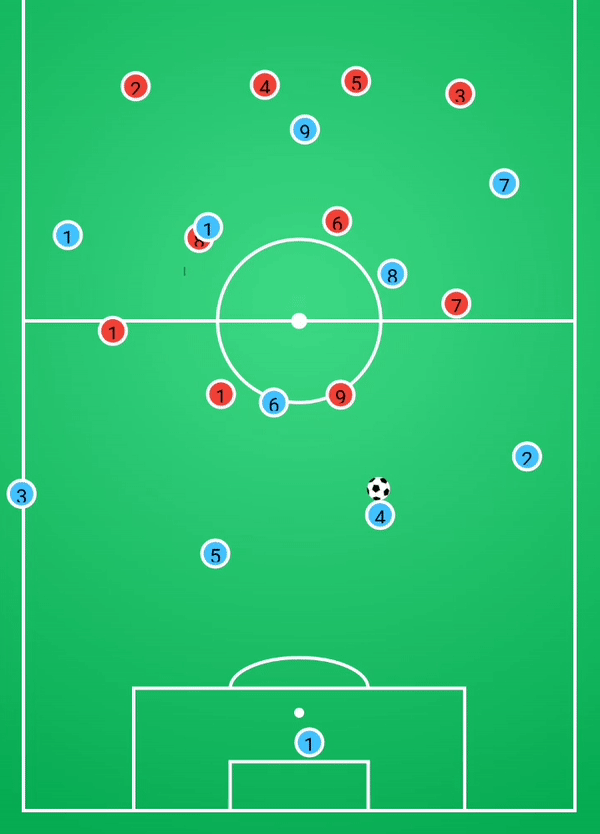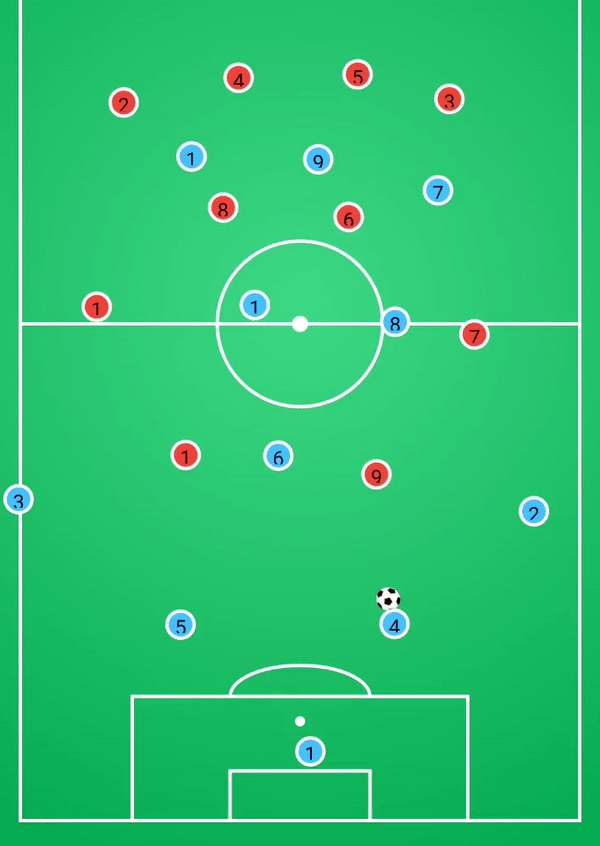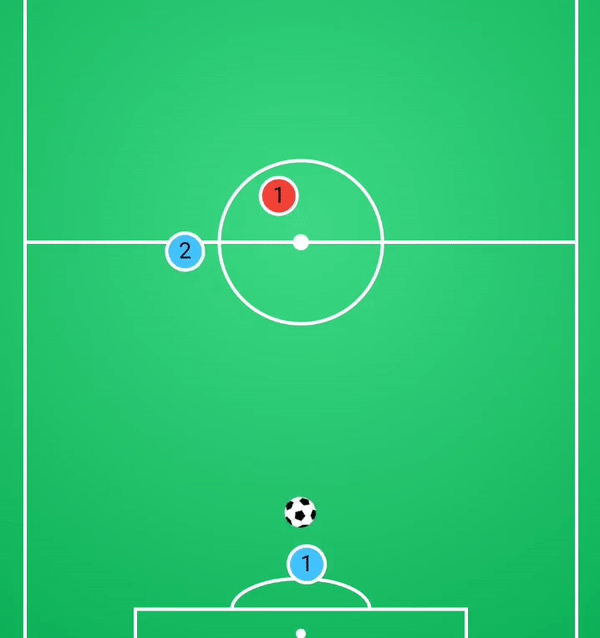Having already looked at some group- and team-related principles, here we deal with the individual concepts. Note: Depending on the game idea, the individual principles can of course differ greatly. Therefore, only those that apply as universally as possible have been selected here.
Principle 1: Open position
Always try to position your body so that you can see as much of the field as possible. It is helpful to always receive the ball with the foot far away from the ball. This automatically puts you in the open position.
Principle 2: Look as deep as you can
The player with the ball should always look at the player who is positioned furthest away (or in front). If you perceive this player, then the other players “in between” are automatically also in the field of vision. If you only look at the immediate surroundings, it is possible that good passing options will be overlooked.

Principle 3: Play only what you see
Children and youth players in particular tend to want to get their heads through the wall. The principle can be used to encourage players to dribble only when pre-oriented, for example.
Julian Nagelsmann put it in a similar way. One of his principles is that the player in the open position should always receive the ball.

Principle 4: 2 Contact play and rhythm change
In the build-up to the game, it is advisable to apply the 2-contact principle. Through fast passing, the opponent should be pulled apart and gaps should be opened. Not only can too many ball contacts make the game slow, but direct passing is not always sensible, as it is easier to make technical errors.
However, if you get closer to the opponent’s goal, the space automatically becomes narrower. If a gap is then identified in the opponent’s defense, it should be exploited by a fast, direct combination game. This change of rhythm from “slow” to “fast” must be prepared properly and patiently.
Principle 5: Passport as a means of communication
The pass can be understood as the “language of soccer”. The way the pass is played conveys information to the recipient of the pass. For example, a softly played ball can signal that a teammate has space and time to receive the ball. A pass on the “near-ball” foot, on the other hand, signals that an opponent is attacking from the other side.
The first pass is played on the foot near the ball. The pass should therefore convey the message “pass the ball back”. The second pass is played to the back foot, signaling to the teammate that he has time to turn into the open position.

Principle 6: Only pass with clear open pass line
If the passing path to the teammate is not clearly clear, then it makes sense to delay the pass by a short dribble. On the one hand, this opens up a better passing path, and on the other hand, it gives the teammate time to run free.
What’s next?
In the third of this series, we look at the defense. How can team pressing be organized with the simplest possible principles? What pressing variants are there?
